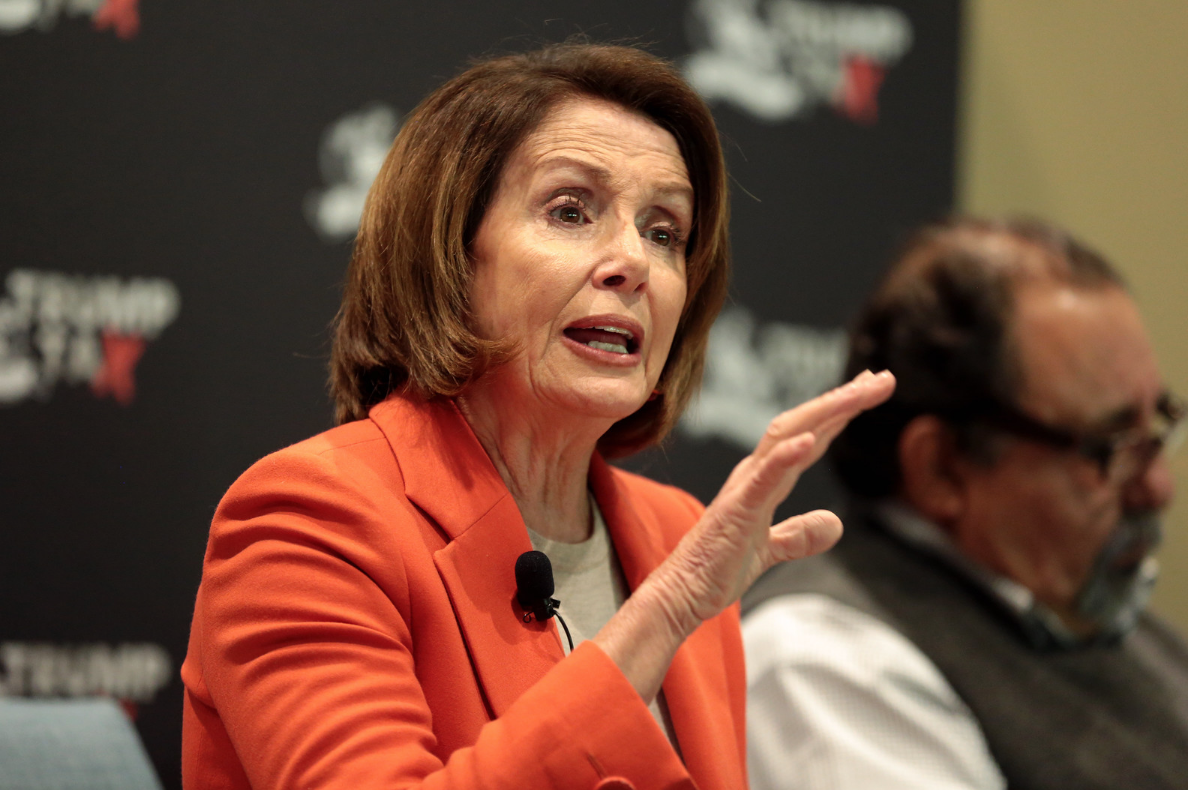
Cole Tamarri
Managing Editor
“They never even saw the transcript of the call. A total Witch Hunt!”
That was the reaction from President Donald Trump after Speaker of the House Nancy Pelosi (D-CA) announced an impeachment inquiry against the president on a CNN live address at 5 p.m. EST on Tuesday, Sept. 24.
The inquiry is an investigation into the events surrounding a July phone call between Trump and the president of Ukraine, Volodymyr Zelensky
According to the Wall Street Journal, Trump attempted to coerce Zelensky to investigate Joe Biden’s son Hunter in the hopes of finding dirt on the former vice president and current 2020 presidential candidate.
According to a Washington Post report from Monday, Trump allegedly threatened to withhold nearly $400 million in military aid from the Eastern European country unless the Ukranian president agreed to his request to work with his lawyer, Rudy Guiliani on the investigation.
Adding to the political circus, Trump has given two different justifications for his decision to initially withhold aid over the past five days, both of which differed from the original reason given to the State Department and Department of Defense in mid-July.
White House Chief of Staff Mick Mulvaney cited an “interagency process” as reason enough to withhold the aid at first, according to the Office of Management and Budget (OMB).
On Monday, Trump and Guiliani acknowledged in separate statements that Trump did ask the Ukranian president for assistance in a corruption investigation but emphasized the aid money wasn’t used as leverage.
When pressed by White House Press Corps reporters later that day as to why he did not send aid at first, Trump said, “We want to make sure that country is honest…why would you give money to a country that you think is corrupt?”
Tuesday, after the aforementioned Post report broke, Trump then contradicted himself, according to the Independent saying, “I want Germany, and I want France, and I want the European Union to put up the money,” and said the delay in aid was because “Europe should spend more on foreign aid.”
In spite of hubris from the White House, Pelosi and her fellow colleagues in the House of Representatives decided to proceed with the impeachment inquiry.
What set the chain of events in motion for Tuesday’s address began a week prior on September 17, the anniversary of the Constitutional Congress, a fact the Speaker ironically pointed out in her speech.
That day, the intelligence community inspector general, Michael Atkinson had formally reported to Congress that the Trump administration was blocking him from turning over a whistleblower complaint regarding the July 25 phone conversation.
The crux of her announcement was a clear and concise assessment of the implications of what Trump’s actions had on not only the office of the President but on the upcoming 2020 election.
“The actions of the Trump presidency revealed dishonorable facts of betrayal of his oath of office and betrayal of our national security and betrayal of the integrity of our elections,” Pelosi said.
Under Article II, Section IV of the U.S. Constitution, the terms of impeachment are: “The President, Vice President, and all civil Officers of the United States, shall be removed from Office on Impeachment for, and Conviction of, Treason, Bribery, or other high Crimes and Misdemeanors.”
For the Founding Fathers, concerns of abuse of power by the executive branch were so prevalent that the aforementioned articles were created before the parameters of the presidency were firmly in place.
Impeachment alone is not the removal of an official from his post. It is merely the drafting of articles by the House. Traditionally, the Judiciary Committee is the first to deliberate the charges. If they determine there is enough substantial evidence, the articles then need to be ratified by a majority of the House after all evidence by the inquiry is gathered.
If the articles pass, then a trial is commenced by the Senate, with the chief justice of the Supreme Court presiding over the case. A two-thirds vote by the Senate is needed to officially impeach with removal from office. In the case of former president Bill Clinton for example, charges passed the House but he was acquitted by the Senate.
This process is lengthy. Former President Richard Nixon’s impeachment proceedings started in October 1973 and lasted until August 9th, 1974, when Nixon resigned from office after articles of impeachment reached the House floor.
As of now, that is the farthest an impeachment proceeding has ever gotten for a U.S. President.
Email Cole at:
ctamarri@live.esu.edu

